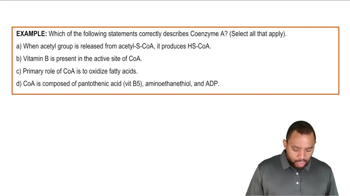The following reactions occur during the catabolism of glucose. Which are exergonic? Which is endergonic? Which proceeds farthest toward products at equilibrium?
b. Phosphoenol pyruvate + H2O → Pyruvate + Phosphate(Pi)
∆G = –14.8 kcal/mol (–61.9 kJ/mol)





